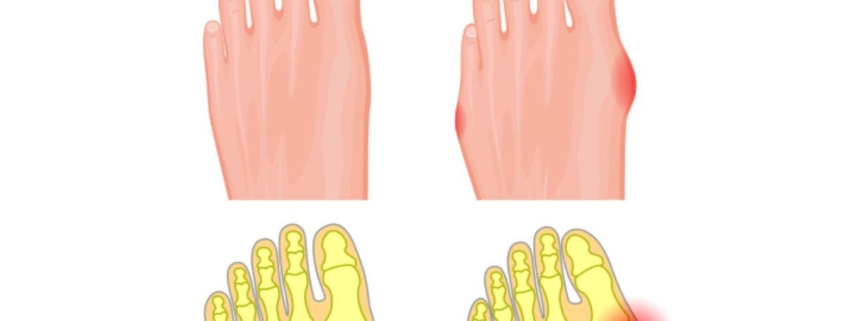
Bunionette (Tailor’s Bunion)
Overview
Bunionette, also known as a Tailor’s bunion, is a foot condition that occurs when a bump develops at the base of the little toe. The condition is named due to its common occurrence among tailors who often sat cross-legged, causing external pressure on the little toe. A Bunionette can cause discomfort and pain when walking or wearing shoes.
Types
There are primarily two types of bunionettes – hard and soft.
Hard Bunionette: This is developed due to the formation of a bone spur (an outgrowth) on the fifth metatarsal bone.
Soft Bunionette: This is caused by the sac filled with fluid due to inflammation and is less common compared to a hard Bunionette.
Causes
The causes of Bunionette can vary and can include:
- Genetic factors or inherited foot type
– Wearing narrow or ill-fitting shoes
– Regular stress or pressure on the foot
– Foot injuries
– Deformities present at birth
Symptoms
Common symptoms include:
– A visible bump on the outside of your little toe
- Redness and swelling at the site of the bump
– Pain and soreness in the area, especially when wearing shoes
– Corns or calluses where the first and second toes overlap
Diagnosis
To diagnose Bunionette, your doctor might examine your foot for inflammation or pain. They may ask about your symptoms, work, lifestyle, and footwear.
Advanced imaging tests, such as X-rays, can also be used to confirm the diagnosis and rule out other conditions.
Treatment Options
Treatment for Bunionette generally depends on the severity of the condition. Non-surgical treatments include:
– Changing footwear to shoes that fit well and avoid pressing on the bump
– Padding and taping the foot in a normal position
- Medications, such as nonsteroidal anti-inflammatory drugs (NSAIDs), to relieve pain and reduce inflammation
– Applying ice to the area for about 20 minutes at a time to minimize swelling
– Physical therapy to maintain joint flexibility and prevent stiffness
In cases where non-surgical treatments don’t provide relief, surgical intervention may be considered.
Living With Bunionette (Tailor’s Bunion)
If you are diagnosed with a Bunionette, it’s important to:
– Wear wide and comfortable shoes
– Rest your feet and elevate them when possible
– Ice the area if it becomes swollen
– Take over-the-counter pain relievers as needed
Remember, it’s essential to seek appropriate treatment and follow your healthcare provider’s advice.
When to Seek Help
If you are experiencing persistent foot pain, notice a visible bump outside your little toe, or having difficulty wearing shoes, it’s time to seek medical attention. You should also seek immediate help if you have diabetes and develop a Bunionette, as it can potentially lead to more serious foot problems.
your health is crucial and should not be overlooked. If you have any concerns or doubts about your condition or its treatment, please do not hesitate to contact a healthcare provider. With the correct help and guidance, you can successfully manage your Bunionette and continue to enjoy a healthy, active life.
